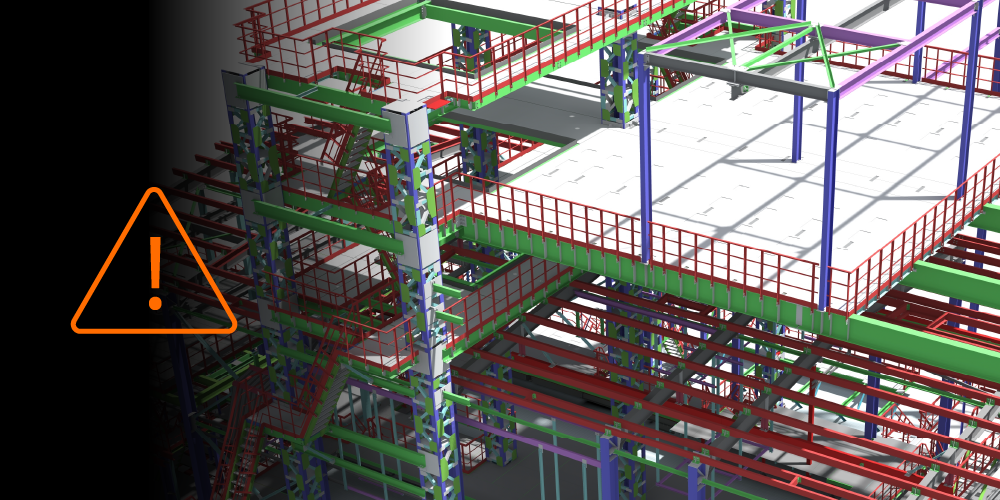Related Articles
— 10 min read
Mastering Indirect Costs in Construction: How Smarter Overhead Control Protects Profitability
Last Updated Oct 30, 2025
Samantha Nemeny
30 articles
Sam—Samantha if she’s feeling particularly academic—has spent a decade in content marketing, with eight years focused on Australia’s construction industry. She has a knack for making complex ideas easy to understand, turning industry jargon into clear, engaging stories. With a background in SEO and marketing, she’s spent the past three years at Procore, helping industry professionals navigate the world of construction with content that’s both insightful and easy to digest.
Last Updated Oct 30, 2025

In 2021-22, the industry generated $437.8 billion in revenue but only $39.4 billion in profit, which works out to only about 9%. Persistent cost pressure and rising overheads mean even minor inefficiencies can erode profit.
Indirect costs compound that pressure. When they’re misallocated or invisible, they quietly misalign budgets, weaken forecasts, and reduce competitiveness across tenders and active projects.
Controlling indirect costs is central to financial resilience. Firms that track and forecast them consistently achieve steadier cash flow and stronger cost discipline across portfolios
In this article, you will learn how to identify, categorise, and manage indirect costs effectively through the development’s lifecycle. We’ll explain how consistent cost coding, structured monitoring, and proactive controls help protect margins and strengthen financial performance across every project.
Table of contents
What Are Indirect Costs in Construction?
Indirect costs are the operational, compliance, and corporate costs that keep projects and the business running.
Often called overheads, indirect costs encompass the structural expenses that enable delivery but sit outside any single trade or activity — essential to execution but not directly measurable in output.
Direct Costs vs. Indirect Costs
Direct costs relate to tangible project execution — materials, trade labour, subcontractors, and equipment that directly produce measurable output.
Indirect costs support project execution and business operations but are not assigned to specific activities across the project’s lifecycle. These include site supervision, insurance, compliance, and administration.
Direct costs scale with project scope, while many indirect costs remain consistent across multiple projects, representing the ongoing cost staying operational.
Clarity between cost types is what keeps estimating, tendering, and profit reporting anchored to reality.
Direct Costs
- Expenses directly linked to project construction and measurable output
- Also called Primary Expenditures
- Examples: concrete, steel, trade labour, subcontractors, equipment hire
- Form the bulk of construction expenditure
- Variances directly affect project-level profit
- Easily attributed to specific project componentsIndirect Costs
- Support overall project delivery but aren’t tied to one activity
- Also called Preliminary and General (P&G) or General and Administrative (G&A)
- Examples: site management, permits, insurance, utilities, admin salaries
- Captured as overhead, enabling compliance and coordination
- Misestimations reduce company-wide margin accuracy
- Spread across multiple projects and allocated using estimates
Spotlight on Direct and Indirect Costs in Australian Commercial Construction
In Australian construction contracts, both cost types are integrated into pricing models:
- Cost plus contracts reimburse contractors for direct costs plus a markup that covers overhead and profit.
- Lump sum contracts include both direct and indirect costs within a fixed price.
- Time and Materials contracts apply hourly or daily rates that account for labour, overhead, and margin recovery.
Accurate classification of these costs supports competitive tendering and sustainable profitability across all delivery models.
Types of Indirect Costs in Construction
Every project carries indirect costs that sustain delivery but don’t translate directly into measurable progress on site.
These costs fall into two main categories:
- Project-Specific Indirect Costs (Preliminary and General or P&G)
- General and Administrative (G&A) Costs
Accurate recognition of both ensures visibility, consistency, and sustainable profitability.
Project-Specific Indirect Costs (Preliminary and General)
These costs cover the site-based overhead required to manage and support an individual project. They include supervision, site establishment, safety measures, and temporary infrastructure required under statutory regulations.
Typical examples include:
- Salaries for project managers, site supervisors, and safety officers
- Temporary site offices, storage, and welfare amenities
- Temporary utilities and communications
- Site access, scaffolding, and cranage
- Security, health, safety, and environmental compliance
- Waste management and daily maintenance
Each project must include a P&G allowance, even when tenders omit explicit provision.
A 2023 study by Marzouk and Niazi found Australian contractors routinely misprice preliminaries, generating bids that either overrun or undercut profitability. This inconsistency weakens cost forecasting and margin control, creating financial uncertainty that can compound across projects.
General and Administrative Costs
G&A costs represent the corporate-level expenses required to keep the business operational regardless of project activity. They include administrative, technological, financial, and regulatory costs that support the delivery of all projects.
Common examples include:
- Office rent, utilities, and supplies
- Salaries for administrative and operations personnel not assigned to specific projects
- Accounting, legal, and IT services
- Software subscriptions, licences, and depreciation
- Vehicles and equipment used across multiple projects, including fuel and maintenance
- Company-wide insurance and bonding, such as public liability, motor vehicle, and management liability policies
Construction bonds are also part of overhead obligations.
These costs are incurred regardless of new project commencements, forming the baseline for operational and compliance expenditure.
Why Indirect Costs Matter for Bidding and Profitability
Indirect costs directly influence both project performance and financial outcomes.
A 2023 study by Abd and Abubakar found that indirect cost allocation has a statistically significant impact on project delivery, with under-allocation linked to schedule delays and reduced profitability.
In Australia’s fixed-price market, how precisely a contractor recovers indirect costs determines both competitiveness and long-term resilience.
Ensuring Accurate Tenders and Competitive Bidding
Indirect costs must be included in every estimate to reflect the true cost of project delivery.
P&G costs cover project-specific management, safety, and site infrastructure, while G&A costs capture corporate overheads that sustain operations.
When estimators omit or misprice these costs, tenders become financially unsustainable.
Understating indirect costs erodes margins in delivery and forces contingency drawdowns meant for real risk, not misallocation. Conversely, overestimating them can inflate tender prices beyond market competitiveness, reducing win rates in an already margin-tight environment.
Protecting Profit Margins and Financial Health
Indirect costs bridge gross and net profit. They're the truest indicator of operational efficiency and cost recovery discipline.
Gross margin reflects project performance before overhead, while net margin measures profitability after indirect costs. A large gap between the two indicates that operational expenses such as rent, insurance, and administration are absorbing returns.
Systematic allocation makes certain that each project contributes proportionally to overhead recovery, maintaining accurate margin visibility across the business. Regular tracking and reporting on indirect costs improve financial transparency and enable more reliable forecasting for future bids.
Managing Contractual and Delivery Risk
Contract structure determines how indirect costs are recovered and how risk is distributed:
- Lump sum contracts: Fixed pricing means unbudgeted indirect costs reduce profit.
- Cost plus contracts: Overheads are reimbursed through a fee, but miscalculation still threatens returns.
- Unit price contracts: Each rate must include indirects to achieve full cost recovery.
Indirect costs also fund compliance, safety, and insurance obligations — non-negotiables that, if underfunded, expose projects to penalties and reputational risk.
Consistent allocation of indirect costs strengthens cost certainty, improves delivery performance, and safeguards profitability.
How to Calculate and Allocate Indirect Costs
Allocating indirect costs correctly requires structure and consistency. The framework below links overhead recovery to project delivery and long-term margin stability.
Identify All Indirect Costs
Compile the full pool of indirect expenses that support project delivery and business operations. Include both project-specific (P&G) and corporate (G&A) overheads such as site supervision, temporary facilities, utilities, administrative salaries, rent, insurance, and software.
Comprehensive capture prevents overhead under-recovery and protects consolidated margin performance.Choose an Allocation Base
Select a consistent and logical basis for distributing indirect costs across projects. Common allocation bases include total direct costs, direct labour hours, or project revenue. The chosen base should reflect how resources are actually consumed.
Calculate the Overhead Rate
Determine the portion of indirect costs each project should carry using this formula:
Overhead Rate = Total Indirect Costs ÷ Total Allocation Base
This calculation ensures proportional recovery across all projects and provides a consistent framework for comparison and forecasting.Apply and Monitor Allocations
Assign the calculated overhead to each project and integrate it into project budgets and reporting to maintain visibility at the Work Breakdown Structure (WBS) level. Review allocations quarterly to adjust for changes in insurance, fuel, or compliance costs.
Include a Contingency Buffer
Allow a 5-10% contingency for unexpected overhead increases such as regulatory changes or extended project durations. This ensures indirect costs remain adequately covered and margins remain stable under shifting market conditions.
Strategies for Controlling and Allocating Indirect Costs
Effective control of indirect costs determines whether construction firms protect or erode their margins. These strategies combine financial discipline, structured allocation, and real-time oversight to ensure every overhead dollar delivers measurable value.
Define and Categorise Costs Consistently
Clarity in cost classification is the foundation of financial accuracy.
Establish a unified cost-coding framework across all projects to separate direct and indirect expenses and maintain clear definitions for P&G and G&A categories.
A centralised overhead model with fixed allocation rules by cost code, project phase, or resource usage prevents confusion and ensures consistency across the business. Dual verification between accounting and project teams before project close-out reinforces accuracy and builds confidence in reported margins.
Monitor and Control Overhead Spending
Ongoing visibility into overhead spending allows firms to prevent cost drift before it impacts profitability.
Integrate indirect cost performance into monthly and quarterly reporting cycles to maintain live visibility on budget drift. Use trend analysis to flag escalating expenses early, such as insurance premiums, fuel, or equipment leases.
Target recurring overheads that offer the greatest opportunity for savings:
- Rent and utilities: Renegotiate leases, implement energy-efficient systems, and consolidate underused spaces.
- Insurance: Benchmark premiums annually and remove redundant policies.
- Fleet and equipment: Improve utilisation, scheduling, and maintenance to minimise downtime.
Recalibrate overhead rates quarterly to reflect current market conditions, and use rolling forecasts to refine projections weekly. A consistent monitoring rhythm keeps spending contained and margins predictable.
Strengthen Allocation and Recovery Discipline
Accurate allocation ensures every project contributes its fair share to overhead recovery.
Apply one allocation methodology consistently — whether absorption or activity-based costing — and link it to the drivers that actually consume resources.
Embedding this discipline across estimating and delivery processes protects profitability through the contract lifecycle.
Digitised variation workflows should automatically adjust budgets and forecasts when changes are approved, certifying that markups in Cost Plus and Time and Materials contracts recover overhead in full and maintain margin integrity.
Pro Tip
Treat overhead visibility like project visibility: if it’s not tracked in real time, it’s already slipping. Integrate indirect cost data into the same dashboards used for project performance to spot issues before they hit margin.
Leverage Technology and Transparency for Oversight
Digital integration transforms overhead control from a manual exercise into a live management system.
Use connected construction and accounting platforms to automate allocation and reporting, ensuring every indirect expense links to the correct cost code in real time. Dashboards should provide clear visibility of overhead recovery, category variance, and forecasted risk exposure, enabling faster and more confident decision-making.
Leading firms use technology to:
- Automate allocation: Capture indirect costs at the transaction level to reduce errors and delays.
- Centralise reporting: Combine data from multiple projects to benchmark overhead recovery and spending patterns.
- Apply predictive analytics: Flag emerging variances early using historical cost data and trend analysis.
Transparency is only valuable when paired with accountability for the outcomes it reveals
Linking overhead data to KPIs such as productivity, compliance, and margin recovery helps teams connect financial discipline to operational outcomes. Requiring project managers to review and sign off on allocations monthly embeds ownership across all levels of the organisation.
Optimise and Refine Continuously
Indirect cost control is an iterative discipline where profitability depends on continuous refinement and operational efficiency.
Treat logistics as a cost lever: Just-in-Time delivery, strategic staging, and proactive servicing reduce waste and convert time savings into tangible margin.
Post-project audits should evaluate the accuracy of indirect cost estimates and allocation methods, feeding insights into future pricing models. Over time, this feedback loop improves forecasting precision, strengthens cost certainty, and compounds profitability across the portfolio.
This integrated approach unites financial discipline, operational control, and technological oversight to ensure indirect costs remain transparent, recoverable, and optimised across every project.
Mastering indirect costs drives long-term profitability
Mastering indirect costs transforms overhead from a fixed burden into a controllable variable, strengthening margins and long-term business resilience.
Through disciplined classification and continuous oversight, firms achieve full overhead recovery, preserve competitiveness, and compound profitability across their portfolio.
Categories:
Written by
Samantha Nemeny
30 articles
Sam—Samantha if she’s feeling particularly academic—has spent a decade in content marketing, with eight years focused on Australia’s construction industry. She has a knack for making complex ideas easy to understand, turning industry jargon into clear, engaging stories. With a background in SEO and marketing, she’s spent the past three years at Procore, helping industry professionals navigate the world of construction with content that’s both insightful and easy to digest.
View profileExplore more helpful resources

Managing Direct Costs in Construction: How Visibility Drives Profitability
Direct costs define the financial reality of every construction project. They cover the labour, materials, and equipment that drive delivery and determine profitability. But even the best-planned budgets can shift...

BIM Clash Detection: Reducing Rework, Delays, and Risk in Construction
Design clashes can be a significant hidden cost in construction, as each conflict between systems risks expensive rework, project delays, and reduced margins. BIM clash detection empowers teams to identify...

Next-Gen Job-Costing: Ready to Move? 5 Things to Consider Before You Get Started
In this three-part series, Quantity Surveyor turned Financial Solutions Specialist Clint Burgess uncovers the real-world gains for people, processes, and profits when businesses move from legacy to next-generation Enterprise Resource...

From Workarounds to Workflow: Solving Construction’s Legacy Job-Costing System Challenges with Next-Gen Tools
In this three-part series, Quantity Surveyor turned Financial Solutions Specialist Clint Burgess uncovers the real-world gains for people, processes, and profits when businesses move from legacy to next-generation Enterprise Resource...
